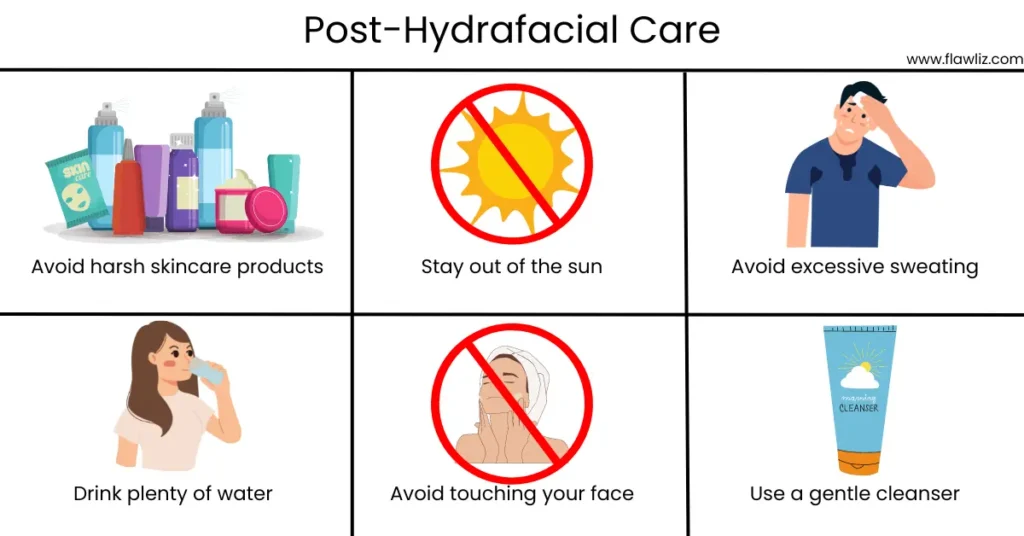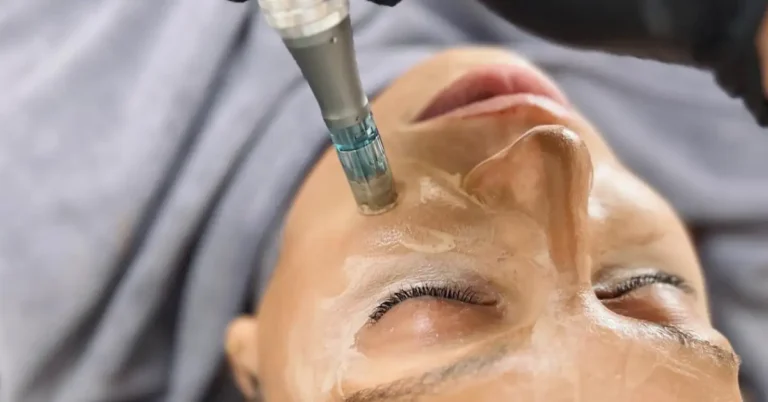Fed up with the constant fight against acne and testing out various treatments without ever seeing ongoing success? I totally understand, having struggled with acne for years myself. However, I now have an amazing solution to offer to you: Have you ever heard of dermaplaning?
It’s a cosmetic procedure that involves using a scalpel to remove the top layer of skin and fine hair on your face. The result is a smoother, brighter complexion. But how often should you dermaplane? Is it something you can do regularly, or should it be reserved for special occasions?
Table of Contents
How Often Should You Dermaplane?
When it comes to how often you should dermaplane, there are a few factors to consider. First and foremost is your skin type. If you have sensitive skin, dermaplaning too frequently can cause irritation and redness.
On the other hand, if you have oily or acne-prone skin, you may benefit from more frequent dermaplaning sessions to help unclog pores and reduce breakouts. Another factor to consider is your desired outcome. If you’re looking to maintain a smooth complexion, you may only need to dermaplane once every few months.
However, if you’re trying to fade acne scars or hyperpigmentation, you may need to dermaplane more frequently to see results. So, how often should I dermaplane? Ultimately, the answer will depend on your individual needs and preferences.
It’s always best to consult with a skincare professional to determine the best course of action for your skin type and concerns. In the meantime, be sure to listen to your skin and adjust your dermaplaning frequency accordingly. With the right approach, dermaplaning can be a safe and effective way to achieve a smoother, more radiant complexion.
Understanding Dermaplaning



Dermaplaning is a popular cosmetic procedure that involves using a surgical blade to remove dead skin cells and fine hair from the face. This procedure is known to leave the skin looking smoother, brighter, and more youthful. But how often should you dermaplane?
As someone who has undergone dermaplaning several times, I can tell you that the frequency of this procedure depends on your skin type and your personal preferences. Generally, it is recommended to get dermaplaning done once a month, but some people may need it more or less frequently.
If you have oily skin or are prone to acne, you may benefit from more frequent dermaplaning sessions. This is because the procedure helps to unclog pores and remove excess oil, which can lead to breakouts. On the other hand, if you have sensitive skin, you may want to space out your dermaplaning sessions to avoid irritation.
Pro Tip: It is important to find a licensed and experienced esthetician to perform your dermaplaning procedure. This will ensure that the procedure is done safely and effectively.
Benefits of Regular Dermaplaning
As someone who has been dermaplaning for a while now, I can attest to the numerous benefits of this treatment. Dermaplaning involves using a small scalpel to remove dead skin cells, peach fuzz, and dirt on the surface of your skin. Here are some of the benefits of regular dermaplaning:

- Smooth and Radiant Skin: Dermaplaning helps to remove dead skin cells, which can make your skin look dull and tired. After a dermaplaning treatment, you will notice that your skin looks smoother and more radiant.
- Reduced Appearance of Fine Lines and Wrinkles: Dermaplaning can help to reduce the appearance of fine lines and wrinkles. By removing the top layer of dead skin cells, dermaplaning can stimulate collagen production, which can help to plump up your skin and reduce the appearance of fine lines and wrinkles.
- Better Product Absorption: Dermaplaning can help your skincare products to penetrate deeper into your skin. By removing the top layer of dead skin cells, dermaplaning can help your skincare products absorb more effectively, which can lead to better results.
- Makeup Goes on More Smoothly: Dermaplaning can help your makeup to go on more smoothly. By removing peach fuzz and dead skin cells, dermaplaning can create a smooth canvas for your makeup, which can help it look more flawless.
My Advice: To get the most out of your dermaplaning treatment, it is important to do it regularly. I recommend getting a dermaplaning treatment every three to four weeks to maintain a smooth, radiant appearance.
Factors Influencing Dermaplaning Frequency
When it comes to dermaplaning, one of the most common questions people ask is: “How often should I dermaplane?” The answer is not a one-size-fits-all solution as several factors can influence the frequency of dermaplaning. In this section, I will discuss the key factors that can affect how often you should dermaplane.
Skin Type
Your skin type plays a significant role in determining how often you should dermaplane. People with oily skin tend to accumulate more dead skin cells, which can lead to clogged pores and acne breakouts.
If you have oily skin, you may need to dermaplane more frequently to keep your skin looking and feeling its best. On the other hand, people with dry or sensitive skin may need to dermaplane less often to avoid irritation and redness.
Skin Condition
Your skin condition is another important factor that can affect how often you should dermaplane. If you have acne-prone skin, you may need to dermaplane more frequently to prevent breakouts and keep your pores clear. If you have fine lines and wrinkles, dermaplaning can help to reduce their appearance, but you may not need to do it as often as someone with acne-prone skin.
Age
As we age, our skin becomes thinner and more delicate, which means that we may need to dermaplane less often to avoid damaging our skin. If you are in your 20s or 30s, you may be able to dermaplane once a month or every six weeks. However, if you are over 40, you may need to dermaplane less frequently to avoid damaging your skin.
Recommended Frequency for Dermaplaning



Dermaplaning is an effective exfoliation technique that removes dead skin cells and vellus hair from the surface of the skin. The treatment leaves the skin looking smoother, brighter, and more youthful. However, it is important to know how often you should dermaplane to avoid over-exfoliating the skin and causing damage.
Based on my personal experience and research, the recommended frequency for dermaplaning is once a month. This allows the skin to regenerate and heal properly between treatments. However, some people may need more frequent sessions, especially if they have oily or acne-prone skin.
It is not recommended to dermaplane more than once a week, as this can cause irritation, redness, and inflammation. Over-exfoliating can also damage the skin’s natural barrier, leading to dryness and sensitivity.
Pro Tip: Before scheduling your dermaplaning appointment, make sure to consult with a licensed esthetician or dermatologist. They can help determine the best frequency for your skin type and condition.
Risks of Over-Dermaplaning
As with any beauty treatment, it is important to practice moderation when it comes to dermaplaning. While it is a safe and effective way to exfoliate the skin, over-dermaplaning can lead to some negative side effects.
One of the biggest risks of over-dermaplaning is irritation. When you remove too much skin, you can leave the underlying layers exposed and vulnerable to irritation and inflammation. This can lead to redness, itching, and even peeling. To avoid this, it is recommended to wait at least three to four weeks between dermaplaning sessions.
Another risk of over-dermaplaning is increased sensitivity to the sun. When you remove the top layer of dead skin cells, you also remove some of the skin’s natural protection from the sun’s harmful rays. This can make your skin more susceptible to sunburn and other damage. To avoid this, it is important to wear sunscreen every day, especially after dermaplaning.
In addition to these risks, over-dermaplaning can also lead to ingrown hairs and acne breakouts. When you remove too much skin, you can also remove some of the hair follicles that help keep hair growing in the right direction.
This can cause hairs to grow back in a way that leads to ingrown hairs and bumps. To avoid this, it is important to use a gentle touch when dermaplaning and to avoid going over the same area too many times.
Remember: If you are new to dermaplaning, start with a single session and see how your skin reacts before scheduling multiple sessions.
Professional Dermaplaning vs At-Home Dermaplaning



When it comes to dermaplaning, you have two options: professional dermaplaning or at-home dermaplaning. Professional dermaplaning is typically done by an esthetician or a dermatologist, using a medical-grade blade to gently shave the surface of your skin, removing dead skin cells and peach fuzz. On the other hand, at-home dermaplaning involves using a razor blade to exfoliate your skin and remove unwanted hair.
Professional dermaplaning is generally considered to be more effective than at-home dermaplaning. This is because the medical-grade blade used by professionals is sharper and more precise than a regular razor blade. Additionally, professionals have the training and experience needed to safely and effectively perform the procedure.
That being said, at-home dermaplaning can still be a great option for those who are unable to visit a professional or who prefer to do the procedure themselves. It is important to note, however, that at-home dermaplaning carries a higher risk of injury and should be approached with caution.
In terms of how often you should dermaplane, it depends on your individual skin type and needs. If you have sensitive skin or are prone to irritation, you may want to limit dermaplaning to once every few months. On the other hand, if you have oily skin or are prone to breakouts, you may benefit from dermaplaning once a month.
Personally, I have found that dermaplaning once every four to six weeks works well for me. It helps to keep my skin looking smooth and radiant, and I have not experienced any adverse effects from doing it this frequently.
My Advice: If you are new to dermaplaning, it is a good idea to start slow and gradually increase the frequency as your skin becomes more accustomed to the procedure.
Maintenance and Aftercare Post-Dermaplaning
Dermaplaning is a popular exfoliation treatment that can improve the appearance of the skin by removing dead skin cells and vellus hair. But how often should you dermaplane? The frequency of dermaplaning depends on several factors, including your skin type, skin concerns, and the results you want to achieve.

After a dermaplaning treatment, it’s important to follow proper aftercare to ensure the best results and avoid any complications. Here are some tips for maintaining and caring for your skin post-dermaplaning:
- Avoid direct sunlight: After dermaplaning, your skin is more sensitive to the sun’s harmful rays. It’s important to avoid direct sunlight and wear broad-spectrum sunscreen with at least SPF 30 to protect your skin from UV damage.
- Moisturize regularly: Dermaplaning can leave your skin feeling dry, so it’s essential to moisturize regularly to keep your skin hydrated and healthy.
- Don’t use harsh skincare products: Avoid using harsh skincare products, such as retinoids, exfoliants, and acids, for at least 24 hours after dermaplaning. These products can irritate your skin and cause redness and inflammation.
- Avoid sweating: Avoid sweating for at least 24 hours after dermaplaning, as sweat can cause irritation and clog your pores.
- Don’t wear makeup: Avoid wearing makeup for at least 24 hours after dermaplaning to allow your skin to heal and breathe.
In terms of how often you should dermaplane, it’s recommended to wait at least four weeks between treatments to allow your skin to fully recover. However, the frequency of dermaplaning can vary depending on your skin type and concerns. For example, if you have oily or acne-prone skin, you may benefit from more frequent dermaplaning treatments.
I dermaplane every six weeks to maintain smooth and even-textured skin. However, it’s essential to consult with a skincare professional to determine the best frequency of dermaplaning for your skin type and concerns.
Pro Tip: To enhance the benefits of dermaplaning, consider combining it with other skincare treatments, such as chemical peels or micro-needling, to achieve even better results.
How Often Should You Dermaplane: Key Takeaways
If you’re considering dermaplaning, one of the most common questions is how often you should have it done. The answer depends on a few factors, including your skin type, the condition of your skin, and your personal preferences. Here are a few key takeaways to keep in mind:
- Dermatologists recommend dermaplaning between once a week to once a month, but not more often than that. Overdoing it can disrupt the skin barrier too much and cause irritation or inflammation.
- If you have sensitive skin or are prone to breakouts, you may want to start with less frequent sessions and gradually increase the frequency as your skin becomes more accustomed to the treatment.
- On the other hand, if you have thicker, oilier skin, you may be able to tolerate more frequent dermaplaning sessions without any issues.
- It’s important to note that dermaplaning is not suitable for everyone. If you have active acne, rosacea, or other skin conditions, you should consult with a dermatologist before trying dermaplaning.
Personally, I have been getting dermaplaning done once a month for the past year and have seen great results. My skin feels smoother and brighter. However, I have also experienced some mild redness and sensitivity after a few sessions, so I’ve learned to space them out a bit more. Overall, I think it’s important to listen to your skin and adjust the frequency of dermaplaning accordingly.
FAQ

Can you do too much dermaplaning?
Yes, excessive dermaplaning can harm your skin. Doing it too often may lead to irritation, redness, and sensitivity. It’s essential to follow recommended intervals for safe and effective results (usually 1x every 1-3 weeks).
how often should you dermaplane?
You should dermaplane approximately 1x every 1-3 weeks for optimal results. This interval allows your skin to recover and promotes safe, effective exfoliation and hair removal.
Does removing peach fuzz cause stubble?
No, removing peach fuzz through methods like dermaplaning doesn’t cause stubble. The hair grows back with the same fine texture, not thicker or coarser.
Is it better to Dermaplane wet or dry?
It’s better to dermaplane on dry skin. Wet skin can hinder the effectiveness of the blade, while dry skin provides better exfoliation and smoother hair removal results.
Should you Dermaplane your entire face?
It’s generally safe to dermaplane your entire face, but some areas may be more sensitive. Be cautious around the eyes and avoid active acne breakouts.
If you liked this blog article about the question: How Often Should You Dermaplane? don’t forget to leave us a comment down below to tell us about your experience with it.





